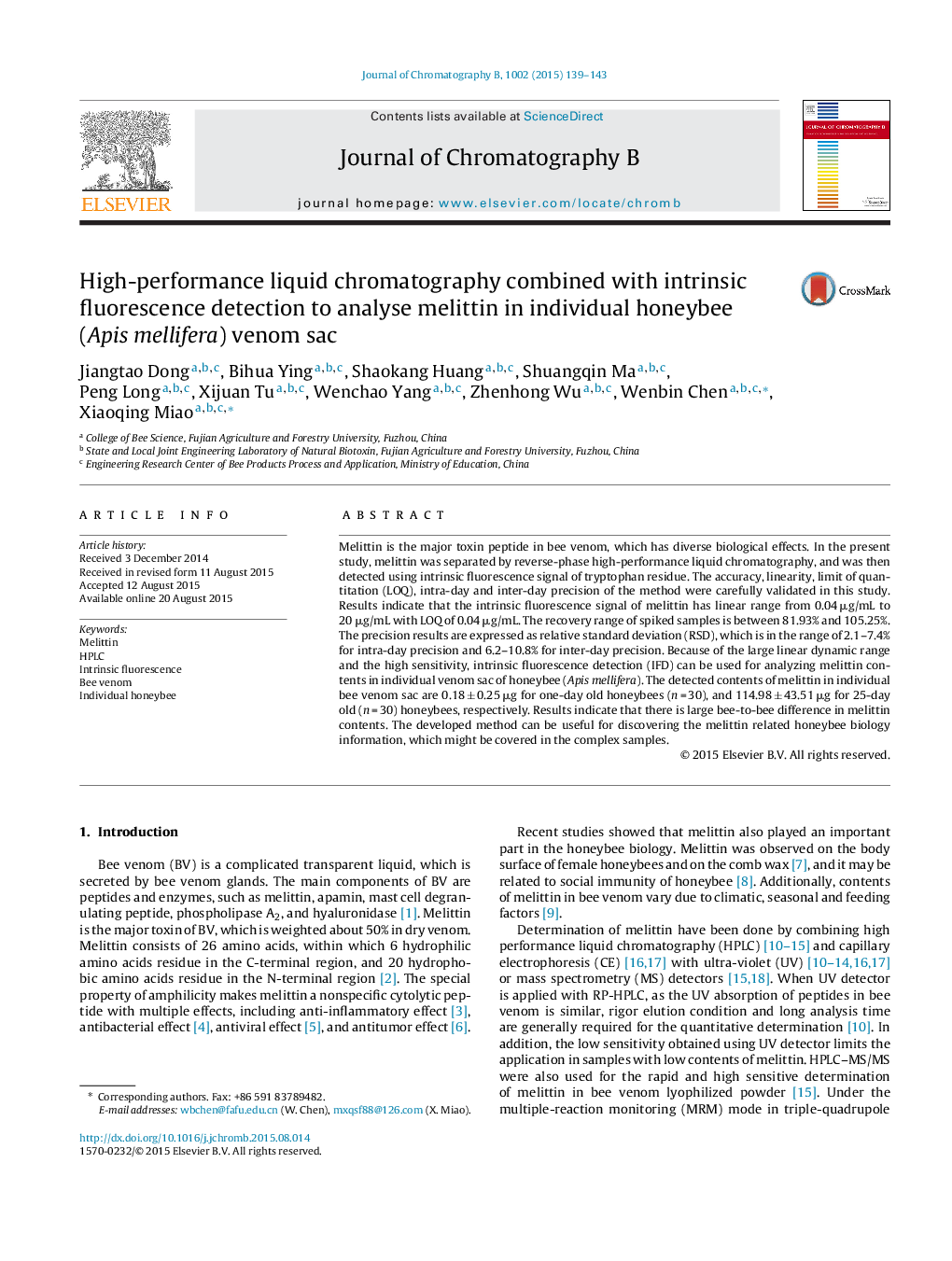| Article ID | Journal | Published Year | Pages | File Type |
|---|---|---|---|---|
| 1212065 | Journal of Chromatography B | 2015 | 5 Pages |
•An HPLC method was developed for the determination of melittin.•Sensitivity and linear dynamic range were improved compared with reported methods.•Melittin was quantified in 30 of the 54 individual one-day old venom sac samples.
Melittin is the major toxin peptide in bee venom, which has diverse biological effects. In the present study, melittin was separated by reverse-phase high-performance liquid chromatography, and was then detected using intrinsic fluorescence signal of tryptophan residue. The accuracy, linearity, limit of quantitation (LOQ), intra-day and inter-day precision of the method were carefully validated in this study. Results indicate that the intrinsic fluorescence signal of melittin has linear range from 0.04 μg/mL to 20 μg/mL with LOQ of 0.04 μg/mL. The recovery range of spiked samples is between 81.93% and 105.25%. The precision results are expressed as relative standard deviation (RSD), which is in the range of 2.1–7.4% for intra-day precision and 6.2–10.8% for inter-day precision. Because of the large linear dynamic range and the high sensitivity, intrinsic fluorescence detection (IFD) can be used for analyzing melittin contents in individual venom sac of honeybee (Apis mellifera). The detected contents of melittin in individual bee venom sac are 0.18 ± 0.25 μg for one-day old honeybees (n = 30), and 114.98 ± 43.51 μg for 25-day old (n = 30) honeybees, respectively. Results indicate that there is large bee-to-bee difference in melittin contents. The developed method can be useful for discovering the melittin related honeybee biology information, which might be covered in the complex samples.
